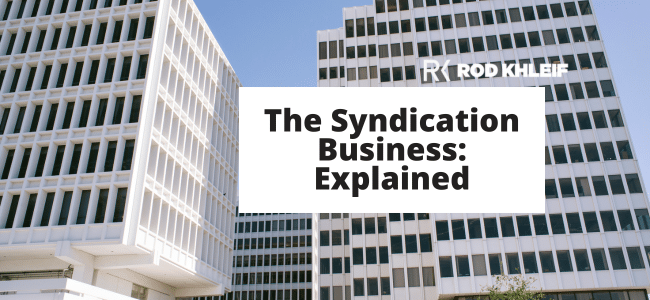2 Things Multifamily Real Estate Investors
Need to Know About the New Tax Law
On December 22nd, 2017, President Trump signed the Tax Cuts and Jobs Acts of 2017 into law. This piece of legislation represents the most comprehensive overhaul of the tax code in 31 years.
The new tax law, which takes effect this year, is complicated and sprawling. There are a number of aspects that still need to be tweaked, and 100% of the tax implications aren’t entirely clear. Still, for the most part, it looks like commercial multifamily real estate investors stand to win big with the new law.
Today, I want to talk about 2 of the most exciting tax changes for commercial multifamily investors. Before I do, though, I highly recommend you pick up the phone and call your accountant. As I said, there are a number of complexities in the new law. Your best bet would be to have a qualified professional look at your specific situation before you go making significant changes to your business and/or tax strategy.
Corporate Tax Cuts and Pass-Through Deductions
The first important change to affect multifamily investors isn’t specific to real estate. Instead, it deals particularly with corporate taxation. Most savvy real estate investors, however, opt to structure their investment business as a corporation, partnership, or LLC. Here’s a link to a video I did explaining the different businesses structures for multifamily investors. Even if you’re an unstructured sole proprietor, there’s something in the new tax law for you.

The most notable and controversial (depending on your political perspective) feature of the new tax law is the corporate tax rate’s massive cut from 35% to 21%. This cut applies strictly to C Corps. However, to maintain balance with S Corps, Partnerships, Sole Proprietorships, and LLCs, the law also includes a 20% deduction for “qualified business income.” In other words, if your business functions as a “pass-through,” then you’re likely to realize a significant discount on your 2018 tax bill next January.
Keep in mind, “qualified business income” is one of those complicated features of the new law that isn’t so easy to pin down. It includes all ordinary income (minus employee wages). It doesn’t include capital gains or dividend income. Again, this all gets complicated fast, so make sure your accountant is on top of the changes.
Like These Articles? Let Us Know and We’ll Send Them to Your Inbox Every Week!
“The bottom line is this: if you’re a business owner, your taxes are going down this year.”
Big Changes to Commercial Real Estate Depreciation
The second change comes in the realm of property depreciation. Unfortunately, nonresidential (a.k.a. commercial) property is still depreciated on a 39-year schedule.
Property improvements, on the other hand, are a different story.

Not too long ago, all improvements on commercial property had to be depreciated over the full recovery period of 39 years. Over time, space was carved out in the tax code for immediate expensing of specific physical improvements. In 2015, this was solidified in the PATH Act, which allowed for a set of immediate deductions, shortened depreciation schedules for certain improvements, and bonus depreciation. While this was all great for commercial real estate in general, it didn’t help multifamily property much at all.
Thanks to the new tax law, Section 179 of the Internal Revenue Code—the area that governs these types of deductions—has received a few investor-friendly modifications. Under the new code, the dollar limit on those capital expenses has doubled from $500,000 to $1 million, which is great news for commercial investors in general—but again, what about multifamily owners?
Here’s where the new law gets particularly sweet. Under the old code, the items you could immediately expense were limited to certain kinds of interior improvements to nonresidential, retail, and restaurant spaces. Under the new code, however, that scope has been expanded to include things like new roofs, HVAC systems, fire protection and alarms, security systems, and (potentially) home furnishing.
From a capital expenditure standpoint, this is huge. Instead of depreciating out that new roof, you can immediately expense it and claim it as a deduction. The tax savings on this move immediately make value-add strategies a whole lot more attractive.
Conclusion
To sum this all up, multifamily owners stand to gain significant tax relief from two angles: lowered income tax and increased flexibility with deductions.
We’ll have to keep a close eye on how this affects the market. Will inventory tighten as landlords use their tax relief to hold on to marginally performing properties? Will we see an uptick in value-add investing? Only time will tell.
Join the conversation on our Facebook community page MultifamilyCommunity.com as we watch these developments unfold. Every day, over 10,000 investors gather to pool their expertise and inspire one another to take their business to the next level. We’d love to have you.
Related quotes to consider:
[Follow Rod on Instagram for tons of great quotes]


















